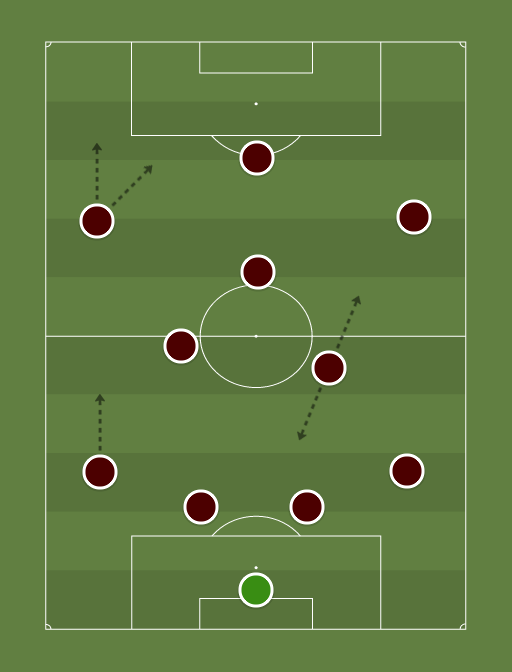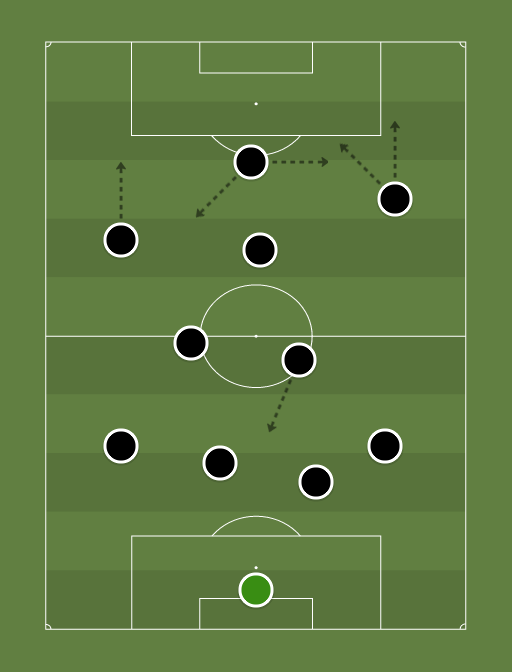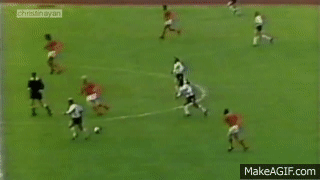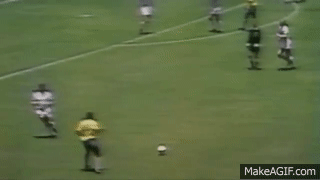Joga Bonito
The Art of Football
- Joined
- Jul 14, 2014
- Messages
- 8,270


....................................Team Chesterlestreet...................................................................................Team Raees
Team Chesterlestreet
Starting XI/tactical remarks:
Michel Preud'homme: Goal keeper. Key strengths: Shot stopping/reflexes.
Back four: Lilian Thuram as right back, in a role similar to the one he played for France with great success. José Santamaría as CB, alongside Bobby Moore. If the pair is considered as a standard/classic one, the former will be more of a stopper, the latter more of a ball player. There is no clear “leader” in that pair, though, as they're both naturals in that department. Finally, Hans-Peter Briegel as left back, a role many consider his best (among several he played at the highest level). The line will be fairly deep, and the fullbacks will mainly focus on dealing with wide threats, meaning that they won't venture forward to any great degree unless there is a clear opening – and Briegel will be the one doing this more than Thuram (as indicated by the arrow). The latter obviously doesn't imply that the whole back four will be standing around back there like statues, waiting for a chance to do some “pure” defending, but rather that the game plan as such does not depend on the fullbacks bombing forward, nor on the defence as a whole pressing high up the pitch.
Wim Jansen: Central/defensive midfielder. He will partly shield the back four, partly hound the opposition further up the pitch. Offensively he will operate in the right channel, mainly seeking to support, and combine with, Matthews.
Paulo R. Falcão: Central midfielder/playmaker. Style: Balanced (meaning he won't be overly defensive, i.e. playing some sort of sheer holding game – nor overly offensive, i.e. operating as an actual attacking midfielder).
Bobby Charlton: Attacking midfielder/playmaker. His starting position, if you will, is deeper than a standard No10, but he will regularly operate as more of an inside forward – pushing up both with and without the ball, looking to create and to finish himself.
Stanley Matthews: Right winger. His brief is simple: Challenge and cause havoc on that right side as much as possible, seek to set up team mates in dangerous positions after having caused an imbalance - in short, the work of a classic winger. Key strength: Dribbling.
Tom Finney: Left winger. Will cut inside to a much greater extent than Matthews, and seek to get into positions from where he can set up team mates (Charlton and Müller, mainly) with short plays – or finish himself.
Gerd Müller: Centre forward. His role should be self-explanatory, but I will point out that Müller's natural game involves much more combination- or linkup play than he's often credited for. His brief in this match reflects this – and if the reader is looking for a precedent, I will point to Müller's performances in Euro '72: It is that sort of CF play I expect from him here – in other words something which goes well beyond the work of a sheer box player/poacher.
Team Raees
Formation: 4-2-4 don't expect any of my 4 attacking players to track back extensively (especially not the wide players) but I do expect Zico and Tostão to help protect the central areas and track players in their zones i.e. put pressure on Falcao. 6 very strong defensive players protecting an inexperienced keeper (Captain of 1930 WC winning side and greatest Pre War defender Nasazzi (Fire) partnering the Ballon D'or winning sweeper Matthias Sammer (Ice), World Cup/Euro/CL winning full backs in Lizarazu/Vogts, with the additional protection of the monstrous defensive abilities of Desailly and Neeskens.
Defensive strategy:
- Dealing with Sir Stan - Matthews is famous for skinning Nilton Santos, but remember it was Djalma who was the rock solid one defensively, Nilton was famous for pioneering bombing forward and not really a fan of defending all game.. whereas Lizarazu has been quoted by Luìs Figo as being his most difficult opponent to beat and perfectly balanced between defence v attack.
- Finishing off Finney - Finney another roaming brainy winger similar to Vogt's last opponent, should be marked well by Vogts - if he can handle Cruyff, he can handle Finney.
- Nullifying his goal threat - Muller or Muller Greaves (depending on the combo) will face the world cup/euro 96 winning duo of Nasazzi and Sammer. Sammer is the perfect reader of the game v someone like Muller who physically can't dominate him but is super intelligent/GOAT finisher
- Midfield Battle - Desailly will keep taps on Charlton/Neesken will focus on Falcao in conjunction with Zico, but will also double up on Matthews if need be.
- No high press - Balanced line, to avoid Greaves/Muller getting in behind. Nasazzi will man mark and Sammer will drop deep to mark the space.
- Best of British combined with German efficiency - Very fluid attacking lineup really, goalscoring winger (aka Rumenigge 'Jairznho') can really focus on getting forward, scoring goals and moving across the pitch wreaking havoc) and Best can switch wings with him when need be and features as more of a creator than Kalle but still a key goalscoring factor in my attack.
- Brazil 70 ft Brazil 82 - Tostão is my key figure in attack as he will plug any gaps, i.e drift wide wherever Kalle or Best cut in. He will drop into midfield and link up with Zico and they will be the primary threats through the middle with their vision, ability to shoot from range and delicate through balls
- Total midfield - Neeskens will run the midfield, dropping deep to assist with the build up play and will break into spaces after passing into the feet of Zico or will spread it wide to my wings
- Set Piece Factor - With Zico on free kick duty, anything is possible.
- Role of full backs (or lack thereof)- On the ball, not really expecting either of my full backs to get forward a great deal - they're merely support players in this match. I have enough attacking threat without letting my full backs bomb forward with little defensive responsibility.
- Finney and Matthews record on the same team and International context - both have a dreadful international record when on the same team (the losses v Hungary notwithstanding, we have the losses v USA/Spain WC 1950, drawing with a mediocre Belgium at WC 1954 - Matthews was dropped next game, where they beat the Swiss 2-0 to get to QFs. They then lost 4-2 against first good side they faced - Uruguay 4-2. In 1958, England's most impressive performance v eventual winners Brazil was a 0-0 without either of them, Finney played only the first game (draw v Russia) and was benched throughout and Matthews had retired.
- Credentials of Briegel/Santamaria against an attack of this quality - both of these players have solid reputations but at this stage of the tournament when you compare them against Moore/Thuram, or any individuals from my defence, I would argue that they have been guilty of conceding large quantity of goals v quality attacks. Santamaria conceded (3g v Austria, 4g v Hungary - WC54, 1955 CL QF onwards conceded 10g in 4 games, including 3 in final v Reims). In 1982, Briegel was subbed as Germany conceded 3 v France, which allowed Germany to make a comeback and part of defence which conceded 3 in the final v Italy against a weaker attack than mine, Forster was part of the same defence. They also conceded 3 in the 86 final v Argentina). In 1980 Briegel was key part of a winning side but they played Belgium, Czechoslovakia and conceded 2 v a past their peak Dutch side.. so didn't meet a top top world class attacking unit.






